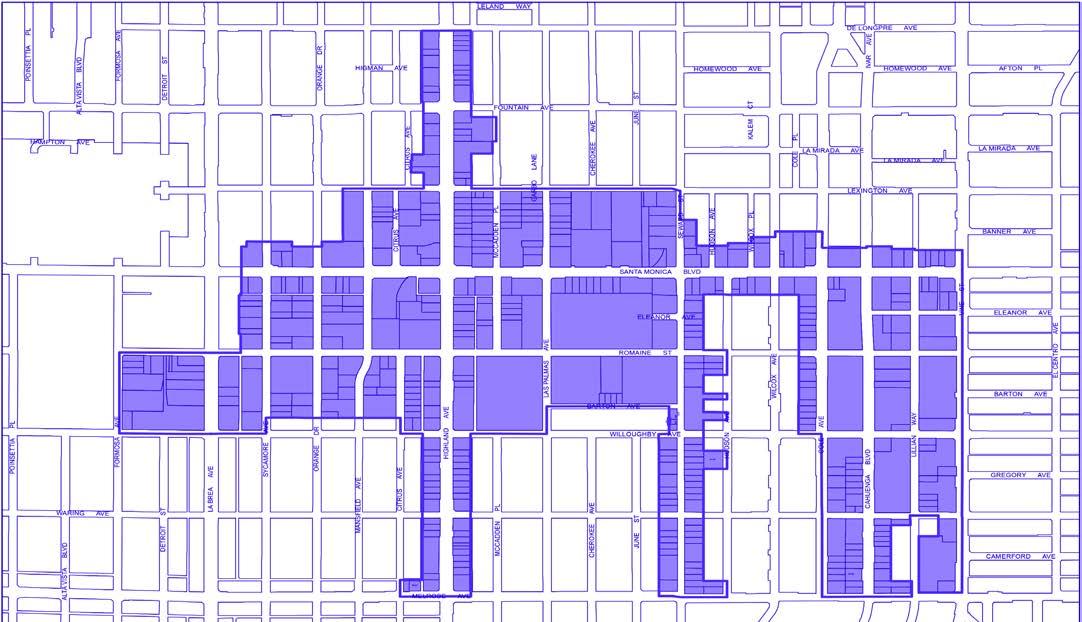BEHIND THE SCENES





District services by the numbers.
Meet the people elected to represent the District.
Meet new members of the Board of Directors.
The history of the studios in the BID.

Jacques Marie Mage opens in the District.
Officine Générale is the latest

Wallis House helps vulnerable single mothers.

Whereas life’s path may be bumpy and difficult to traverse at times, the same will not be true soon of the sidewalks that stretch from 717 to 816 North Highland Avenue. A survey conducted by Precision Concrete Cutting last year identified this highly trafficked area of the District to also be one of its most hazardous in terms of sidewalk safety. (For context, the entirety of Highland from Delongpre to Melrose contained 94 hazards, 82 of them moderate to severe.)
pril marked the beginning of the end to a years-long effort to replace the trash receptacles in the Media District. Over the next several weeks, 60 old receptacles (left) will be swapped out for the new models (right). z

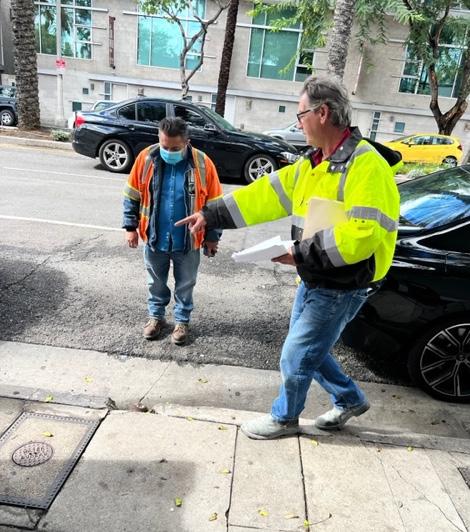
Hollywood Media District

Dianna Eisenberg, Executive Director

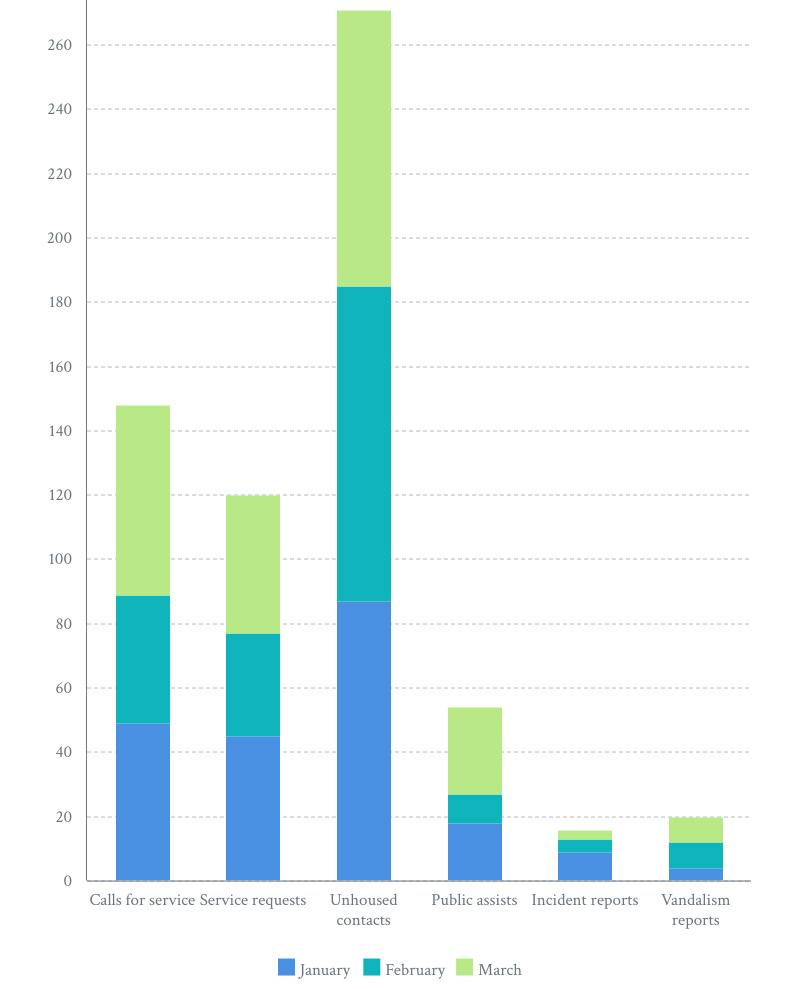
Each November, the Media District asks its stakeholders to nominate candidates qualified to fill vacant seats on its Board of Directors. Once nominations are received, the Nominating/Board Development Committee reviews all applictions and presents a slate of nominees that represents a cross-section of the businesses in the Hollywood Media District. This year, four new members were added to the Board for the 2023-2024 term.
With experience in event planning, brand management, and the luxury retail market, Gabija Butkeviciute joins the Media District Board of Directors as the General Manager of Echelon Television Center.
“As a new stakeholder in Hollywood, my immediate concern is with the very limited dining and retail options available. It would be wonderful to see the Hollywood Media District lure exciting new retailers to the area that would not only meet the needs of the community, but promote the culture and history of the area,” said Butkeviciute. “I want to see the District continue to flourish as a vibrant, safe community that not only attracts innovative businesses, but also builds upon its historical identity.”
Avalon Bay Properties
Kayla Sargent is the General Manager for Avalon Bay Properties and brings with her multi-family real estate expertise, knowledge of the market, extensive knowledge of security concerns in the District, security costs and demands due to transient and criminal activity in the area, and relationships with the high-end retailers her company brought to the community. She also lives in the Media District.
“I hope to see the Media District continue to successfully clean up the community and assist in making it a desirable location for businesses to thrive, while providing needed assistance and resources to the community in need,” said Sargent.
Occidental Entertainment
As the Senior Vice President of Administration for the Real Estate Group at Occidental Entertainment, Anita Siraki—who joins the Media District Board as Vice President—knows the District very well. Her talent for consensus-building among groups with varied viewpoints as well as stints serving on the boards of other organizations will be an asset.
“I have worked in the District for many years, so I am very connected to the community and its needs,” said Siraki. “I am interested in anything and everything that makes our district cleaner and safer.”
Siraki sees the safety of BID residents, businessowners, and their employees as well as the dissolution of encampments to be at the top of her priority list.

Onni Group
Duncan Wlodarczak joins the Media District Board of Directors as a representative of the Onni Group. He brings with him prior experience in public relations, community relations, and navigating various community groups and organizations to create coalitions needed to obtain specific objectives. He is also the Vice-Chair of a Business Improvement Association (BIA) in Vancouver, Canada.
“I believe work should be done to build a diverse coalition to seek out more resources and support to tackle the homelessness challenges in the area,” said Wlodarczak. “I have seen success with this...by collaborating across businesses, non-profit service providers, and community economic development organizations.” z
That Hollywood became the entertainment capital of the world can be attribured to two things: the Southern California climate which allowed production to take place year-round and, more importantly, it was situated far enough away from New Jersey so that independent filmmakers could escape the litigious reach of Thomas Edison.

Edison, a prolific inventor, was also a ruthless tyrant when it came to his patents. Although created by his assitant, William Kennedy Dickson, Edison filed a patent for the world’s first movie viewer, the kinetoscope, in 1891. Due to its success, he would later open the world’s first movie studio, Black Maria, in West Orange, New Jersey.
Competition soon sprang up and Edison form the Motion Picture Patents Company (MPPC) or, a trust that included Dickson’s production company; Biograph, which held its own camera patent; and Eastman Kodak, the biggest producer of raw film. With the sheer number of patents held by these companies, it became nearly impossible for any independent movie studio to make a film without an avalanche of copyright infringement lawsuits from the MPPS. Universal Studios alone found itself grappling with 289 of these lawsuits.
Hence, independent filmmakers looked west to California where judges were more sympathetic to their claims and, even when MPPC would win a claim, the onerous task of collecting on it meant smaller studios faced minimal consequences. And, thus, Hollywood was born.
On October 27, 1911, the Nestor Film company opened the first movie studio actually located in Hollywood (there were previous studios opened in Los Angeles). Occupying a space at Sunset and Gower, Nestor was the West Coast production unit of the Centaur Film Company and produced Hollywood’s first films. However, as a brand, it would be short-lived as it merged with its distributor, the Universal Film Manufacturing Company the following year and the Nestor label ceased to be used by mid-1917.
For its part, the Media District has occupied a significant space in the history of Hollywood studios. In 1919, in what would become the model for future District businesses Charlie Chaplin’s film studio manager, John Jasper came up
with the idea to build a fully-equipped studio available for rent by independent producers with more modest budgets. Using 16.5 acres of undeveloped land, he built three stages and several bungalows. Thus, the Hollywood Studios was born on Santa Monica Bl. between Seward and Las Palmas.
In the early 30s the lot acquired the name General Service Studio where Mae West and the Marx Brothers were con tracted. It was also the place where a 3 year-old Shirley Temple would first step in front of the camera in 1932.
In 1980, Francis Ford Coppola took ownership and opened the lot as Zoetrope, eventually putting it up for sale. Then, after years of ownership by the Singer family as Hollywood Center Studios, it was added to the Hudson Pacific Properties portfolio and dubbed Sunset Las Palmas Studios.

Over its many owners, the lot at 1040 N. Las Palmas has been home to The George Burns and Gracie Allen Show, Mr. Ed, The Beverly Hillbillies, Petticoat Junction, Green Acres, The Addams Family, Jeopardy!, Star Search, and PeeWee’s Playhouse.
In 1919, Metro established itself at Lillian Way and Eleanor St. while building a huge studio covering four city blocks at Romaine St. and Cahuenga Blvd. that opened a year later in the space now owned by Red Studios. That same year, 1920, Metro pictures was purchased by Marcus Loew (of the theatre chain) and a few years later merged with Goldwyn Pictures and Louis B. Mayer Productions to form Metro-Goldwyn-Mayer or MGM. Before the merger, Metro’s star roster included Lillian Gish, Buster Keaton, Jackie Coogan, Marion Davies, and Ramon Novarro.
Of the four-block studio at Cahuenga Blvd., one block would continue as a studio. In the 1950s and 60s, it was Desilu Studios, home to the production company of the same name owned by Lucille Ball and Desi Arnaz. The company produced wellknown classics like I Love Lucy, Mannix, The Untouchables, Mission: Impossible and Star Trek
In 1974, the lot was sold and turned into Ren-Mar Studios, where The Golden Girls, Empty Nest and the initial four episodes of Seinfeld were shot. The lot is currently home to Red Studios.
In 1930, millionaire playboy, Howard Hughes, began construction on what would become the hub of his business empire (including his movie studio). It was here, in the art deco masterpiece located at 7000 Romaine Street. where Hughes would produce The Outlaws in 1943, starring a then-unknown Jane Russell.
Today, the Hollywood studio business continues to not only thrive, but expand, in the Media District. Here are some of the studios currently operating today:
1149 North McCadden Pl.
Composed of six operating divisions, including – Albert Sweet Development, Occidental Studios, Occidental Technologies, Occidental Lighting & Grip, Tricor Entertainment, and Prop Services West – Occidental Entertainment Group Holdings operates 14 sound stages and roughly a million square feet of production, executive, editorial & creative office space. Add to that a vast array of lighting, grip, props, and technical services and you have a one-stop shop that can accommodate feature film productions, epi-
sodic television shows, commercials, games, and music videos of all sizes.
1040 N. Las Palmas Ave.
One of three locations that makes up the Sunset Studios empire (the other two being Sunset Bronson Studios and Sunset Gower Studios). Sunset Las Palmas offers 11 sound stages, not to mention numerous bungalows and production office suites.
Sunset Studios also offers an expansive fleet of production trucks, trailers, and equipment following its acquisition of Star Waggons and Zio Studio Services. Additionally, tech-
nical services through a partnership with All Mobile Video (AMV) can be accessed providing a wide variety of equipment options and engineering support for transmission, live streaming capabilities, and more.
1005 Lillian Way
What started as a transportation company for photo shoots in 1992, Quixote quickly blossomed into a sizeable business offering multiple sound stages, a transportation fleet, and every kind of production equipment imaginable. Stage 4 of Quixote Studios, part of the Sunset Studios portfolio, can be found in the Media District and offers a 9,400 sq ft sound stage with 1,200 amps of power, and 4,900 sq ft of production office space.
846 N. Cahuenga Blvd.
The boutique Red Studios Hollywood boasts 76,000 sq ft of stage space and over 40,000 sq ft of executive offices, bullpens, and support space making it a prime location for fulllength feature films as well as multi-series television orders.
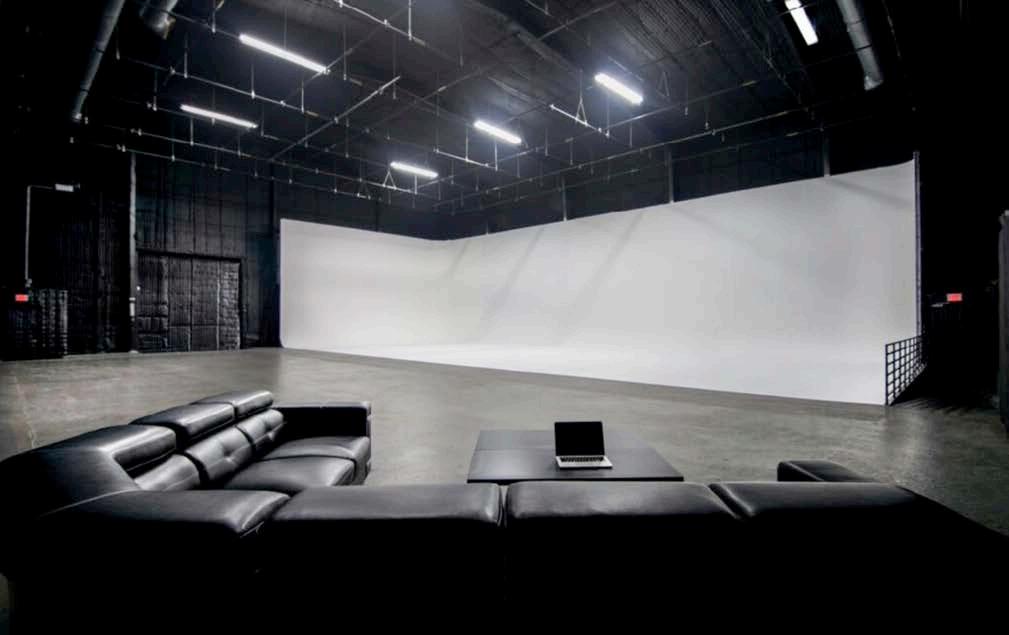
Site amenities include flexible kitchen and dining space, a mobile coffee cart, on-site truck parking, historic bungalows with full bathrooms and showers, remodeled hair and make-up rooms, onsite lighting & grip departments, and more.
1043 Seward St.
Line 204 currently offers genuine Hollywood sound stages known for their modern design and “Southern flare”. 204’s main studio campus encompasses sound stages, private production offices, and conference rooms with on-site grip, film lighting, and photo equipment right in the center of the Media District. This boutique studio is a great choice for film productions, table reads, wrap parties, and more.
5601 Santa Monica Blvd.
Set to break ground in the third quarter of this year, Echelon Studios will offer a full-service lot with around 610,000 sq ft of production facilities. This includes four soundstages, one flex stage, creative office space, and elevated bungalows stacked above the base camp and has sweeping views of the Hollywood Hills.
6311 Romaine St.
The revamped art deco Television Center building, now in the Echelon portfolio from BARDAS Investment Group, will provide more than 200,000 sq ft of creative space including a production stage, editing suites, and writers rooms. z

To say Jerome Jacques Marie Mage loves eyewear might be a bit of an understatement. In an interview with The New York Times, the designer—who previously worked for Arnette and Spy Optic and recently opened a flagship Jacques Marie Mage boutique on Sycamore—admits to personally owning more than 1,000 vintage pairs. This collection is one of the many diverse inspirations that has defined the brand since it launched nearly a decade ago. Furthermore, it is the rare independent label not produced by a larger company like most eyewear brands.
Today, Jaques Marie Mage has a reputation for producing handcrafted, high-quality designs characterized by unique shapes, intricate details, and luxe materials like acetate, titanium, and 18k gold. The company has made a commitment to sustainability and uses eco-friendly materials whenever possible. It works with suppliers who share its commitment to ethical and sustainable practices.
Classic silhouettes abound—aviators, wraparounds, cateyes, and the like—each with a mix of a French sophoistication and eye for detail imbued with the freespiritedness of Hollywood. To make them even more special, each frame is handcrafted by skilled artisans, and offered in limited editions. z

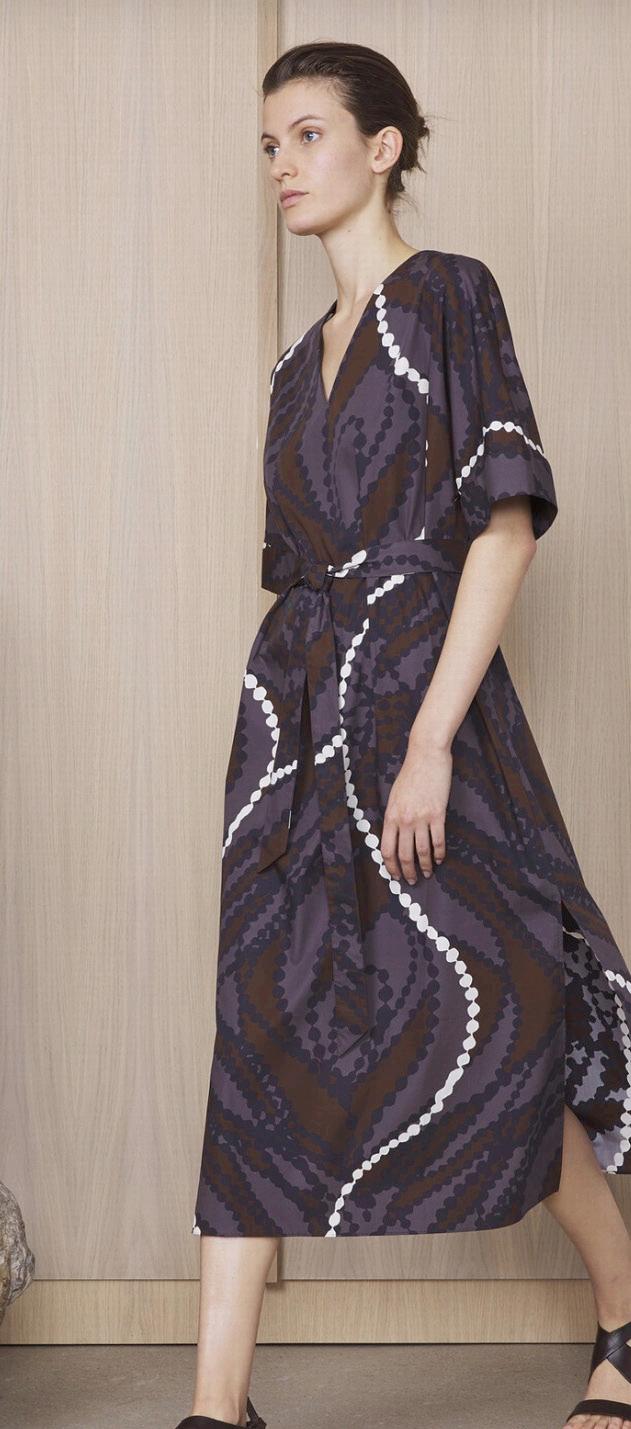

The French invasion of Sycamore continues with the mid-March opening of the Officine Générale flagship boutique. The Paris-based clothing line from designer Pierre Mahéo is known for its minimalist yet luxurious classics constructed with the best Japanese, Italian, and English fabrics.

The new 1,300-square-foot store, located at 927 N. Sycamore, reflects Officine Générale’s values of quality, simplicity, and sustainability and meshes well with its French neighbors—Ex Nihilo, Jacques Marie Mage, Gigi’s, Tartine, and Mr. T.
“My first visit to the neighborhood was love at first sight. The architecture, the vibe of the area was everything I was looking for,” Mahéo said in an interview with WWD. He designed the space with his wife Nina Haverkamp and Paris-based architect Juliette Rubel.
It features clean lines, neutral colors, and natural materials like wood and concrete and sports Bossche School “Goliath” chairs by Gerard Wijnen, midcentury items, ceramic vases by Léa Ginac, and a sculpture by Tim Orr.
The result is a welcoming and intimate atmosphere curated to showcase the brand’s unique mix of classic French style and modern sensibilities. z
Officine Générale , 927 N. Sycamore Avenue.
Hope has a new home; specifically, a pink mansion on Hollywood Boulevard called Wallis House. Opened in 2019 by Aviva Family and Children’s Services, this “bridge home” provides unhoused women and children a place to live for two years while they acquire the skills and support they need to live an independent future.

A 2021 Homeless Count conducted by the Los Angeles Homeless Services Authority (LAHSA) conservatively estimated 41,000 unhoused people to be living in the city. Of those, 29% were women, and 8% were children under the age of 18. In other words, 11,890 women and 3,280 children were experiencing homelessnes in Los Angeles at the time of the count, most of them unsheltered and living on the streets.
To make matters worse, many of these women are homeless as a result of fleeing domestic abuse or other traumas, making the road to regaining some sort of normalcy and stable living that much more challenging. Single mothers and their children living on the street are historically at a greater risk for harmful outcomes.
With the help of L.A. City and County, as well as community partners, Wallis House is helping to address the homelessness crisis across the Los Angeles region by helping these young single mothers and their children.
Previously, Wallis House provided a safe home and support services to hundreds of foster and at-risk girls who were removed from their homes due to abuse, neglect or legal issues. It will continue in that tradition by serving women between the ages of 18 and 24, including mothers with young children, to transition them out of homelessness.
The facility accommodates up to 40 families and includes a gym and play area, as well as a boutique and salon. Residents are also able to take classes in cosmetology and sewing to help them gain the necessary skills to succeed and lead productive lives.
For more information about Wallis House, or to learn about ways you can partner with them to help reduce LA’s homelessness crisis, visit aviva.org/wallishouse. z
Wallis House provides young women and children in Hollywood a path out of homelessness.
